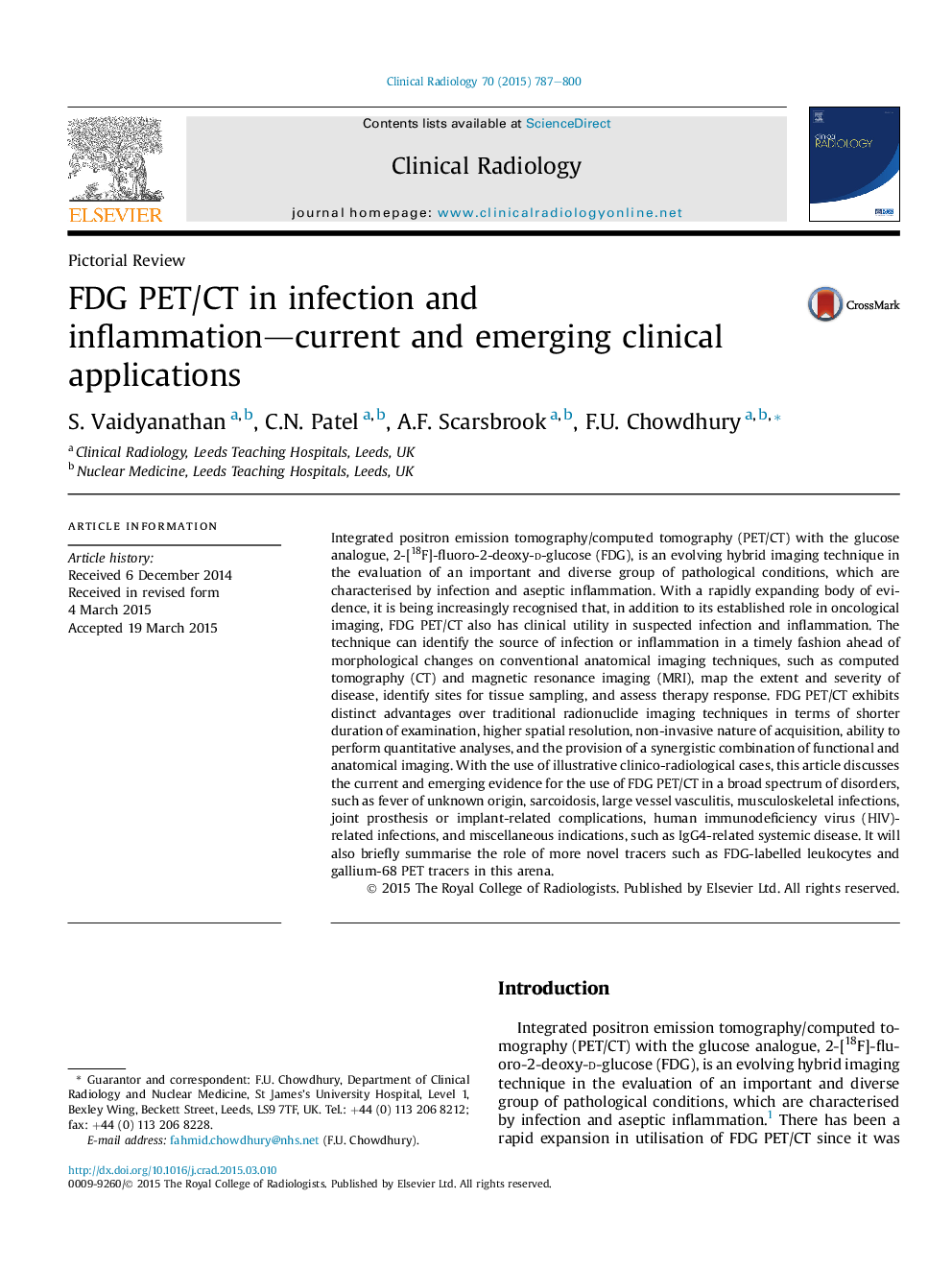| Article ID | Journal | Published Year | Pages | File Type |
|---|---|---|---|---|
| 6190851 | Clinical Radiology | 2015 | 14 Pages |
Integrated positron emission tomography/computed tomography (PET/CT) with the glucose analogue, 2-[18F]-fluoro-2-deoxy-d-glucose (FDG), is an evolving hybrid imaging technique in the evaluation of an important and diverse group of pathological conditions, which are characterised by infection and aseptic inflammation. With a rapidly expanding body of evidence, it is being increasingly recognised that, in addition to its established role in oncological imaging, FDG PET/CT also has clinical utility in suspected infection and inflammation. The technique can identify the source of infection or inflammation in a timely fashion ahead of morphological changes on conventional anatomical imaging techniques, such as computed tomography (CT) and magnetic resonance imaging (MRI), map the extent and severity of disease, identify sites for tissue sampling, and assess therapy response. FDG PET/CT exhibits distinct advantages over traditional radionuclide imaging techniques in terms of shorter duration of examination, higher spatial resolution, non-invasive nature of acquisition, ability to perform quantitative analyses, and the provision of a synergistic combination of functional and anatomical imaging. With the use of illustrative clinico-radiological cases, this article discusses the current and emerging evidence for the use of FDG PET/CT in a broad spectrum of disorders, such as fever of unknown origin, sarcoidosis, large vessel vasculitis, musculoskeletal infections, joint prosthesis or implant-related complications, human immunodeficiency virus (HIV)-related infections, and miscellaneous indications, such as IgG4-related systemic disease. It will also briefly summarise the role of more novel tracers such as FDG-labelled leukocytes and gallium-68 PET tracers in this arena.
